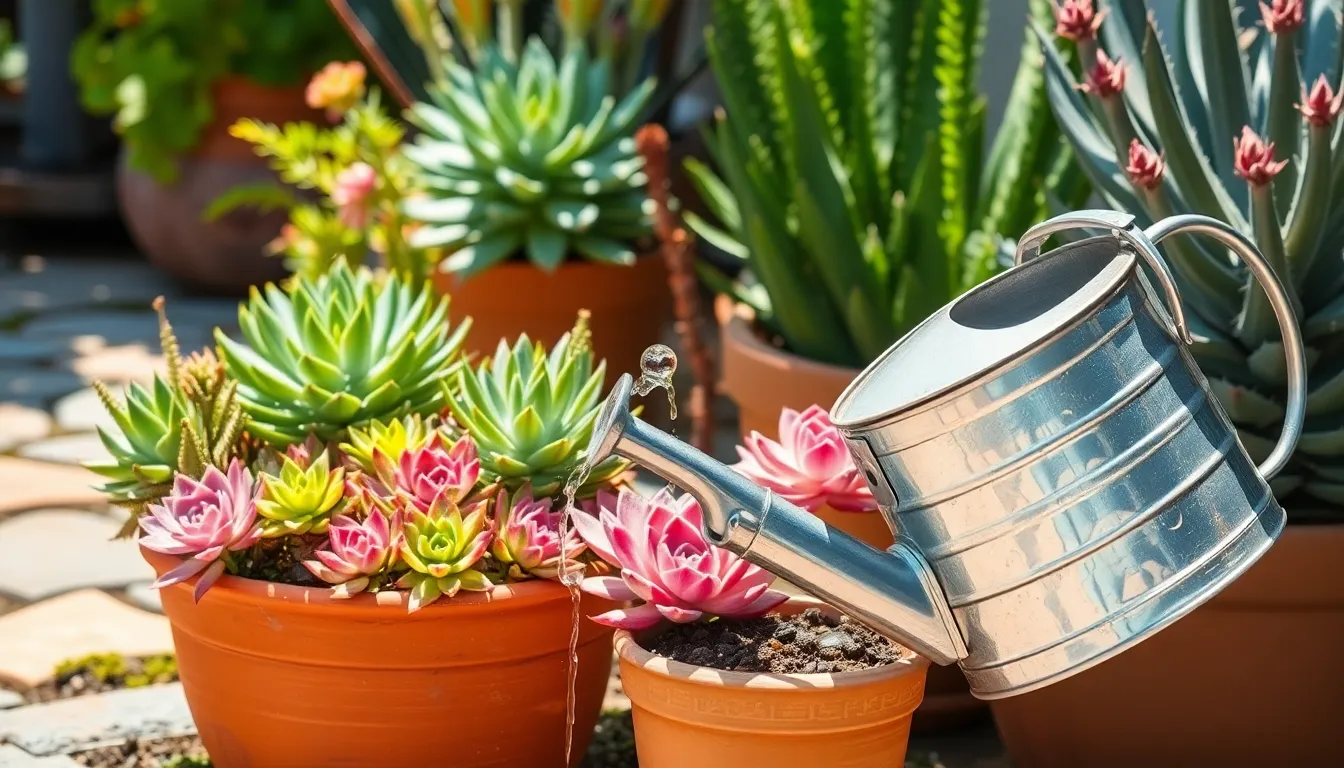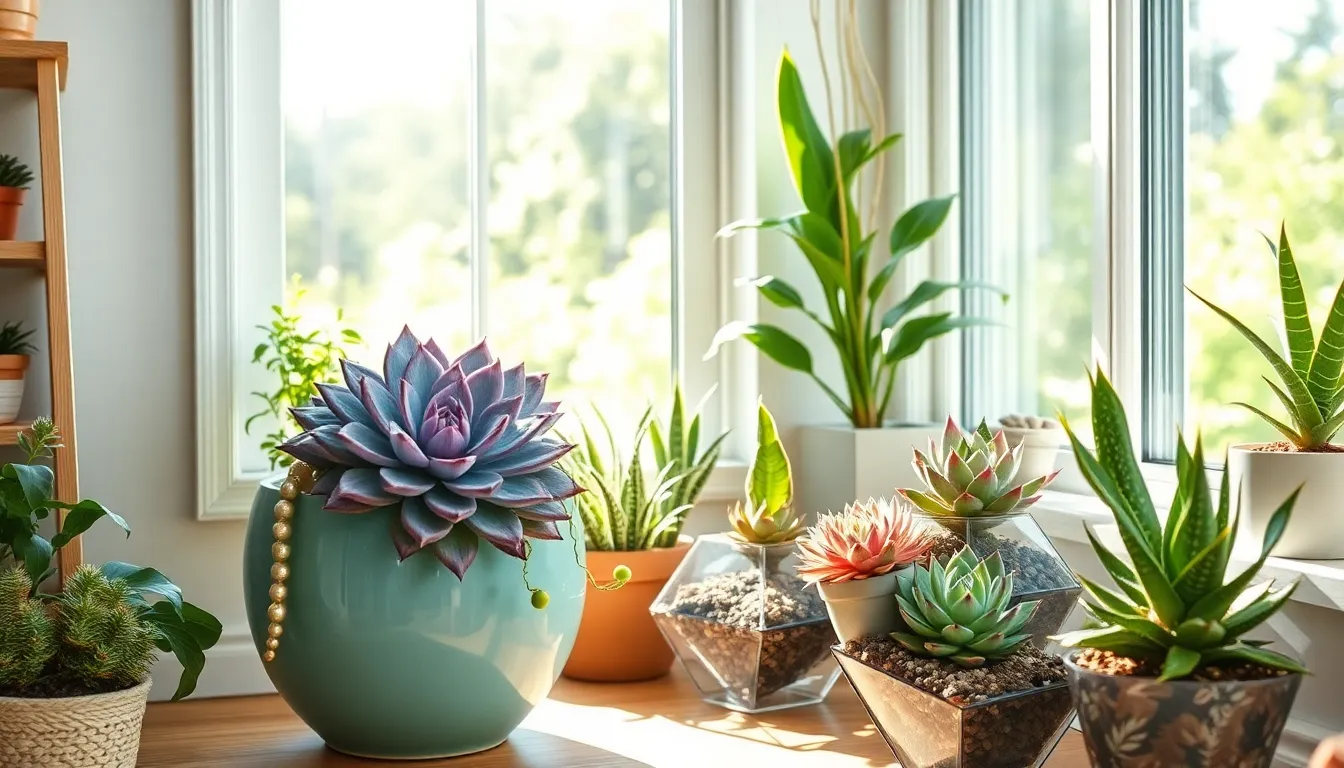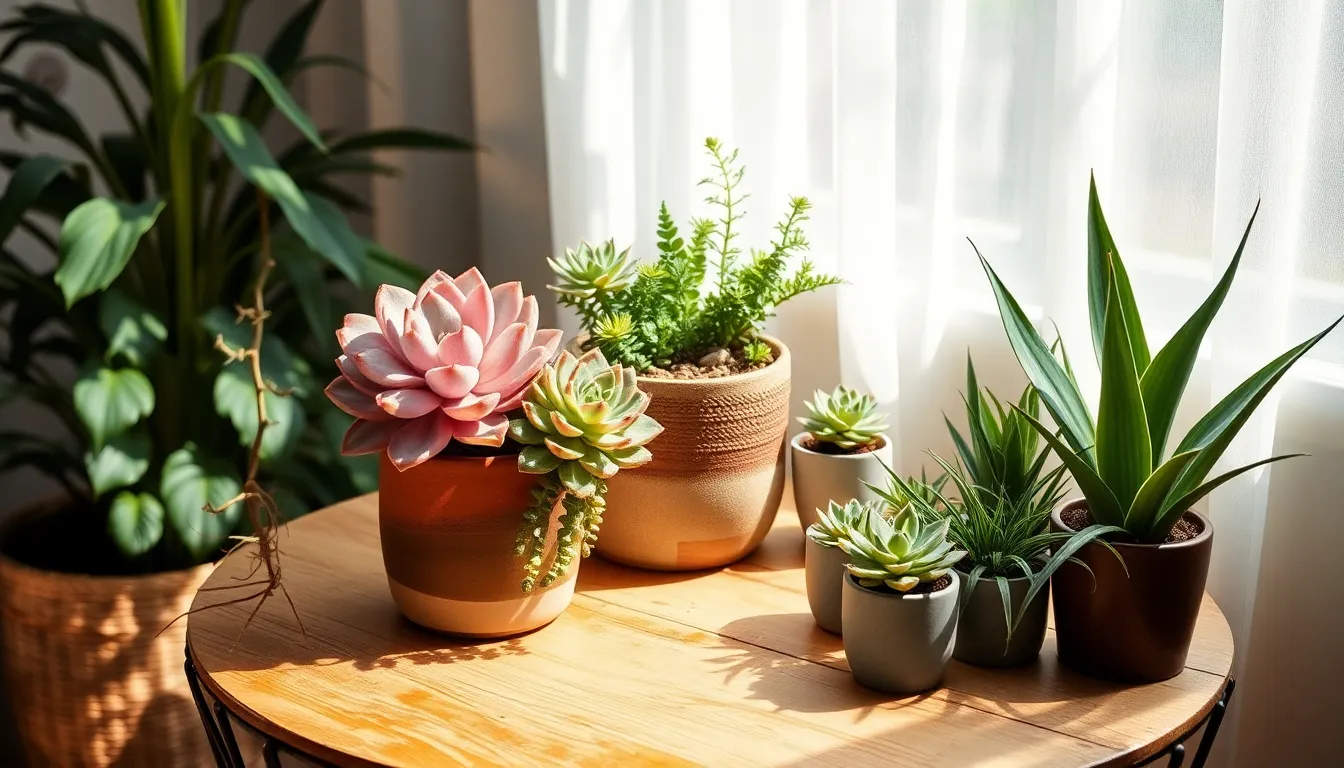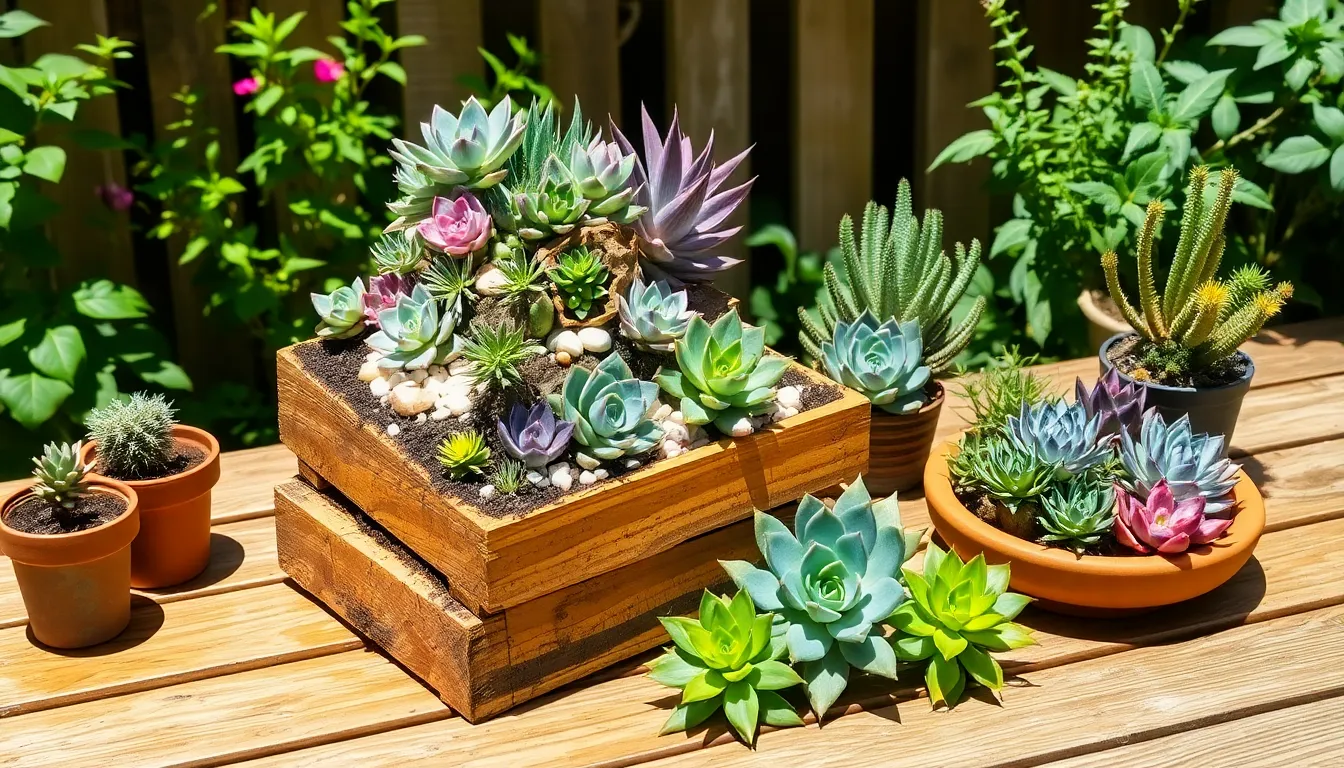Succulents, with their striking forms and charming resilience, have captured the hearts of both novice and seasoned gardeners alike. Yet, even these hardy plants can be deceptively tricky when it comes to one crucial aspect: watering. Understanding the art of watering succulents is not just about keeping these captivating plants alive; it’s about unlocking their fullest potential to thrive and delight in any environment. In a world where overwatering is the leading cause of succulent demise, mastering the right techniques can transform your gardening experience, allowing you to nurture these beauties with confidence.
In this article, we’ll dive into the essential practices for watering succulents effectively, ensuring your plants not only survive but flourish. Whether you’re just starting your succulent journey or are an experienced gardener looking to refine your skills, you’ll discover insights that can make a significant difference in your plant care routine. From understanding the unique water storage capabilities of succulents to identifying the subtle signs of thirst and saturation, we’ll cover all the bases. Let’s debunk the myths, embrace the nuances, and celebrate the joy of growing succulents with the perfect hydration balance.
Select Appropriate Watering Tools
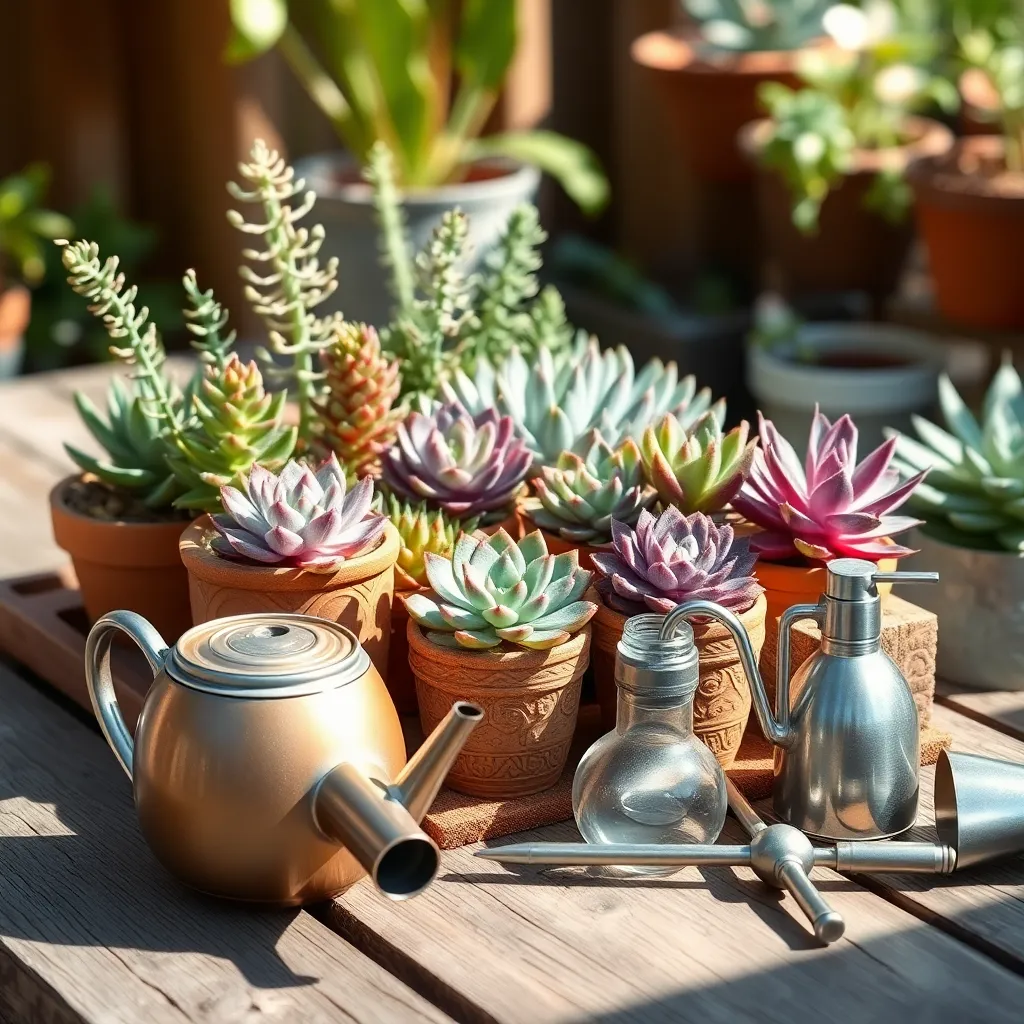
Choosing the right watering tools is crucial for maintaining healthy succulents. A small, narrow-spouted watering can is ideal because it allows you to direct water precisely at the base of the plants, minimizing moisture on the leaves.
Alternatively, a spray bottle can be a handy tool for beginners who might be prone to overwatering. Using a spray bottle helps control the amount of water applied and is particularly beneficial when dealing with small or indoor succulents.
For more advanced gardeners, a drip irrigation system can be a great investment, especially for larger succulent collections. This system ensures consistent moisture levels by delivering water slowly over time, which is perfect for preventing root rot.
Regardless of the tool you choose, always make sure your succulents are planted in well-draining soil, such as a cactus mix. This type of soil helps excess water to drain quickly, which is essential for preventing overwatering and maintaining the right moisture balance.
Check Soil Moisture Levels
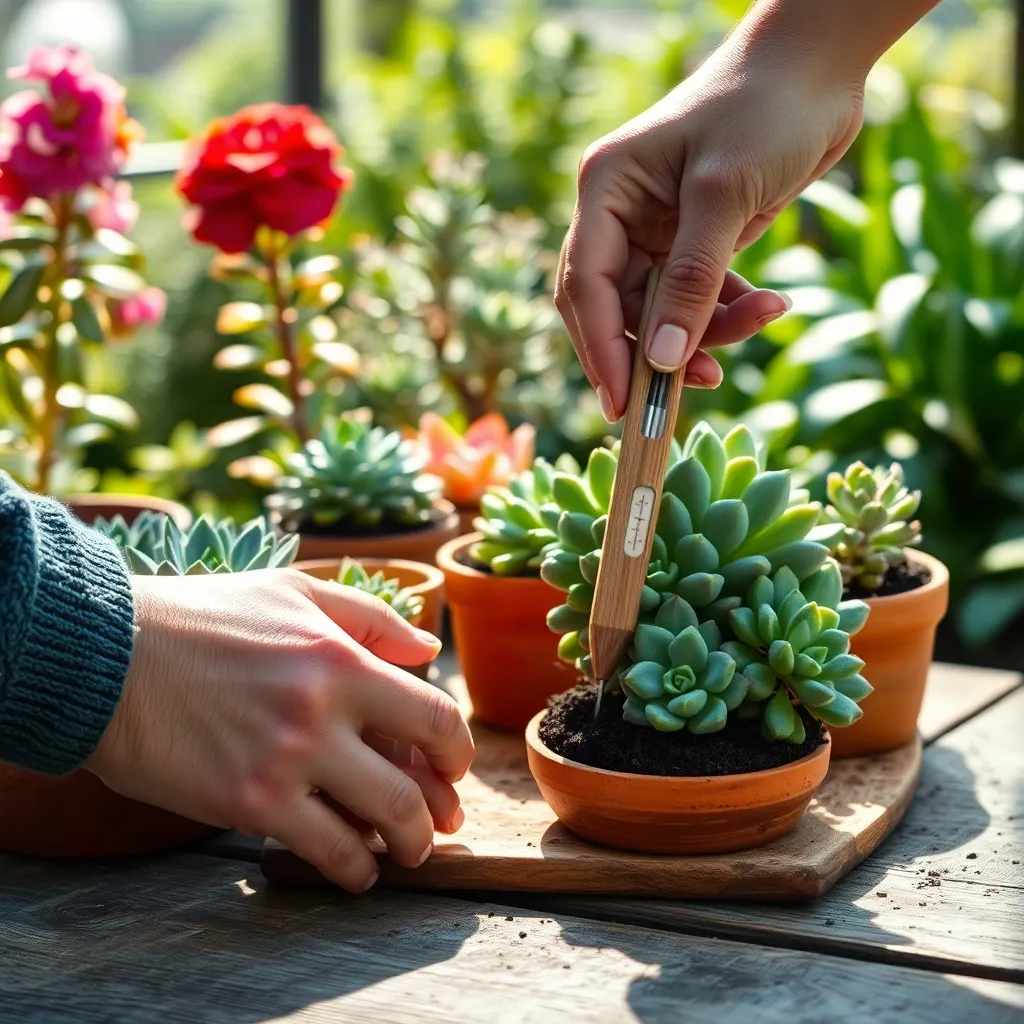
Checking soil moisture levels is crucial to prevent overwatering your succulents. Use a moisture meter or simply insert your finger about an inch into the soil to assess moisture content.
After watering, ensure the soil becomes dry before the next watering session. Succulents prefer a well-draining soil mix, such as one containing sand, perlite, or pumice, to help avoid water retention.
For beginners, a simple thumb test can be effective. If the soil feels dry to touch, it’s likely time to water your succulents.
Advanced gardeners might opt for a moisture meter for more precise readings. These tools provide digital readings, helping you to track the exact moisture levels in your soil.
As a general guideline, water your succulents every 1 to 2 weeks, adjusting for humidity and temperature changes. During the dormant winter months, reduce watering as succulents require less moisture then.
Water Thoroughly, Not Frequently
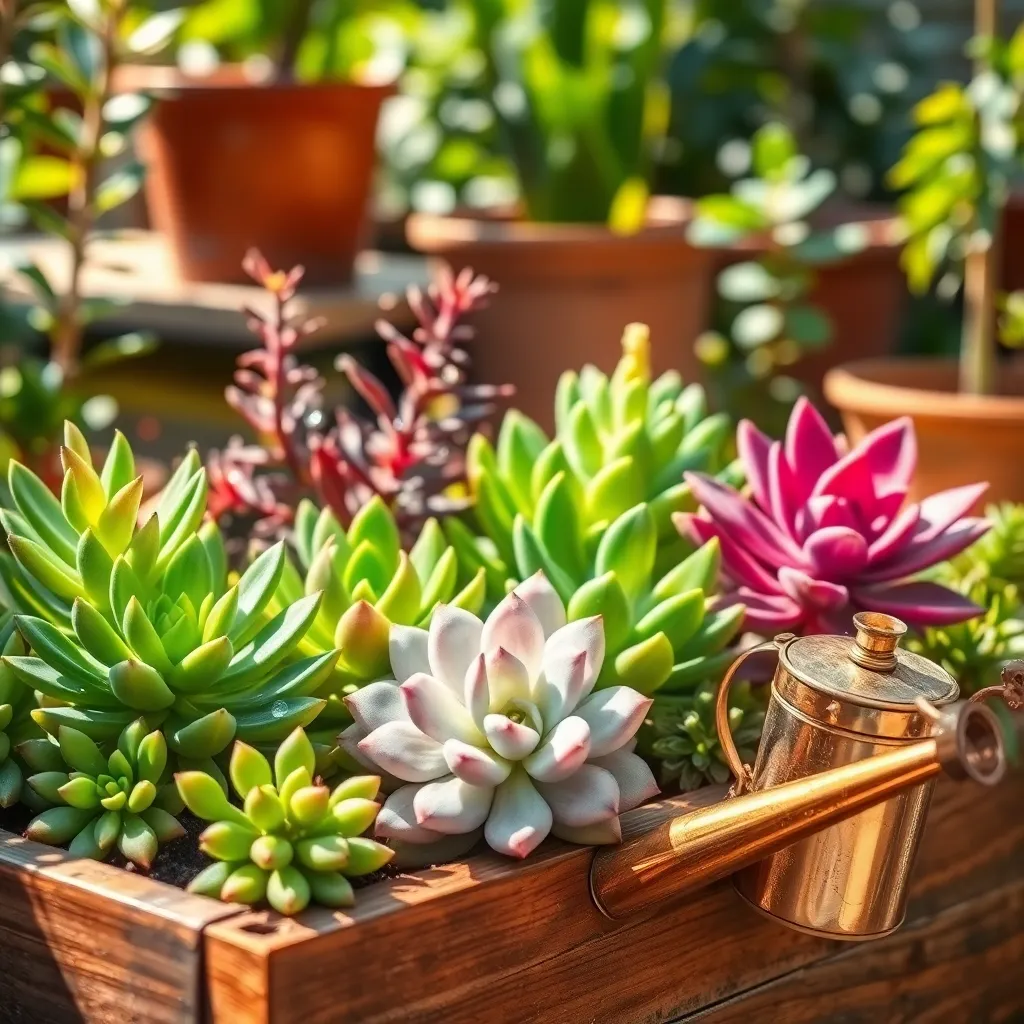
When watering succulents, the mantra to remember is “water thoroughly, not frequently.” This approach mimics the natural habitat of succulents, where they endure long periods of drought and then get a good soaking during rare rainfall.
Begin by ensuring your potting mix is well-draining, as this is crucial for preventing root rot. A mix of cactus soil with added perlite or coarse sand is ideal, allowing excess water to flow through and not linger around the roots.
To water thoroughly, pour water evenly across the soil surface until it drains out of the bottom of the pot. Ensure your pot has drainage holes—this is non-negotiable if you want to keep your succulents healthy and thriving.
Once you’ve watered, let the soil dry out completely before the next watering session. Depending on your environment and the season, this could mean watering every 1 to 3 weeks.
Allow Soil to Dry Completely
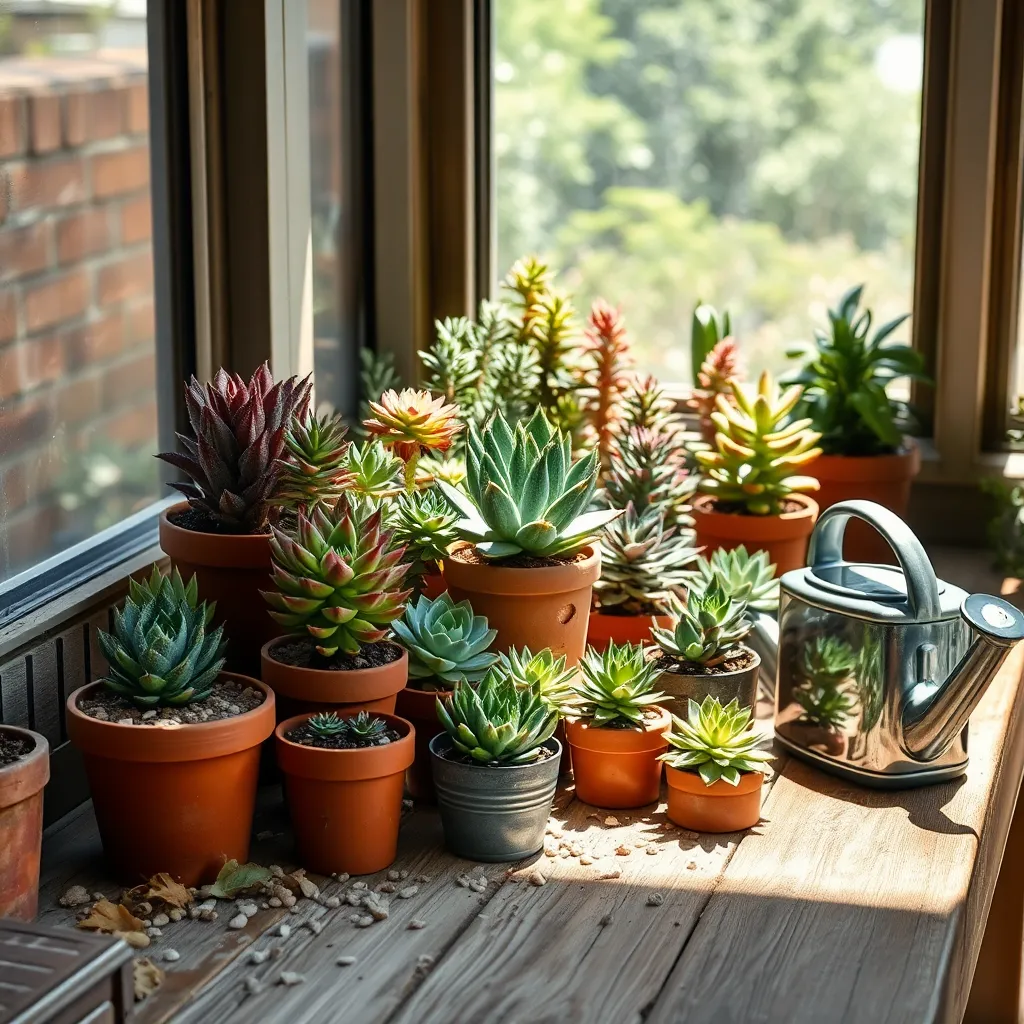
After watering your succulents thoroughly, it is essential to allow the soil to dry out completely before the next watering. This practice mimics their natural arid habitat and prevents root rot, a common issue caused by overwatering.
Choosing the right soil is crucial to ensure proper drainage for your succulents. Opt for a cactus potting mix or create your own by combining equal parts of potting soil, coarse sand, and perlite to ensure water flows through easily.
Incorporating a layer of small rocks or pebbles at the bottom of your pot can further enhance drainage. This technique helps prevent water from pooling at the bottom, ensuring the roots do not sit in moisture for prolonged periods.
For those with indoor succulents, it can be helpful to use a moisture meter to check soil dryness. Insert the meter into the soil to confirm it’s fully dry before watering again, as indoor environments can vary in humidity levels.
Adjust Watering for Seasons
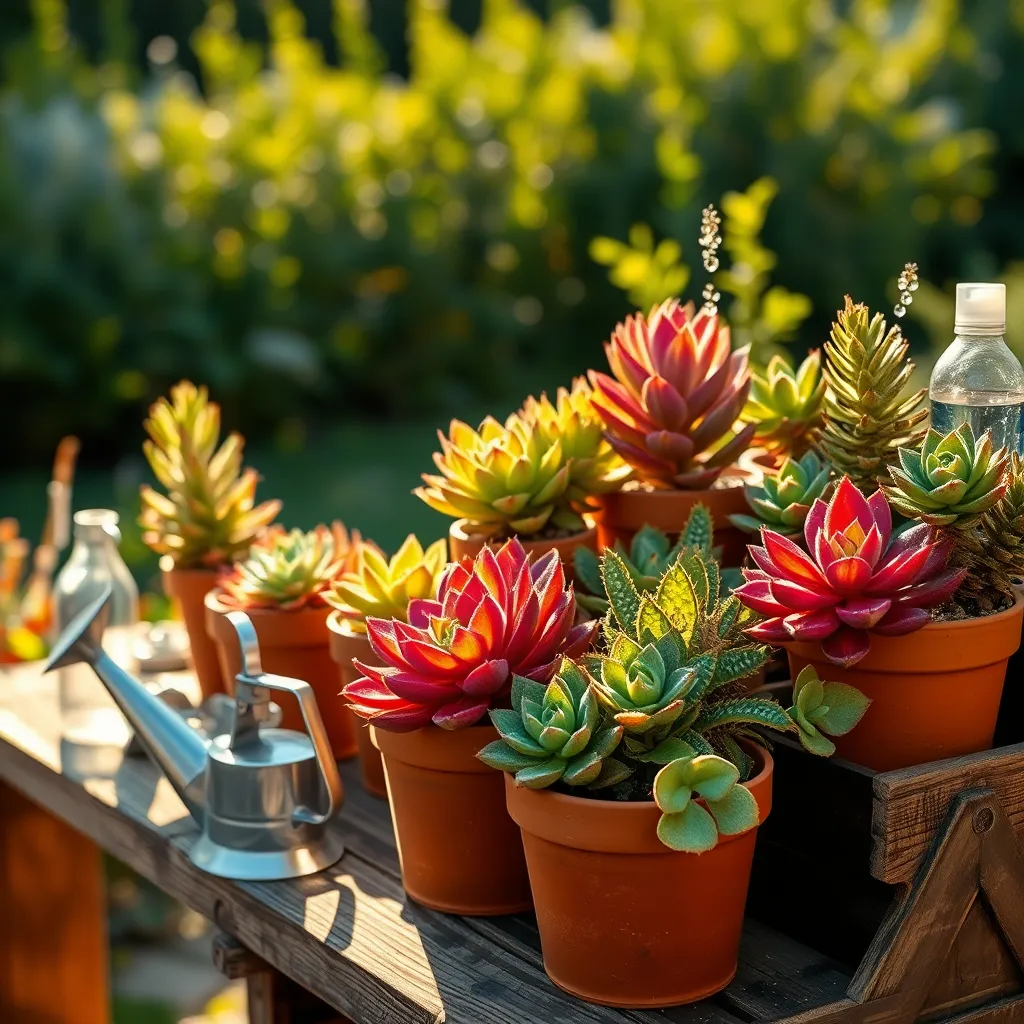
Succulents’ watering needs change throughout the year, so it’s important to adjust your watering schedule with the seasons. During the active growing season of spring and summer, succulents generally require more frequent watering compared to the dormancy period in fall and winter.
In spring and summer, consider watering your succulents once every 7 to 10 days, ensuring the soil dries out completely between waterings. This is the time when succulents store water in their leaves, so it’s crucial to provide them with adequate moisture without overdoing it.
As temperatures drop in fall, begin to reduce your watering frequency to every 14 to 21 days. During winter, it’s often best to water succulents as infrequently as once a month, or whenever the soil feels completely dry a few inches below the surface.
For experienced gardeners, using a moisture meter can help you fine-tune your watering schedule by providing precise soil moisture readings. Additionally, consider the type of soil mix you’re using; a well-draining mix with sand or perlite is essential to prevent waterlogging, especially in cooler months.
Conclusion: Growing Success with These Plants
In nurturing both succulents and relationships, balance and understanding are key. This article explored five essential concepts: recognizing individual needs, practicing patience, maintaining consistency, creating a supportive environment, and adapting to change. Just as succulents thrive when watered appropriately, relationships flourish with mindful attention and care.
To put these insights into practice, start by identifying one relationship in your life that could benefit from a little more “watering.” Consider its unique needs and how you can foster a healthier dynamic. A small step today, like a heartfelt conversation or a thoughtful gesture, can make a significant difference.
As relationships are ever-evolving, having resources at your fingertips is invaluable. Bookmark or save this article now so you can revisit these principles whenever you need guidance.
Remember, relationship success is an ongoing journey, not a destination. By applying these nurturing techniques, you’re setting the stage for a thriving relationship garden that grows stronger with each passing day. Empower yourself to cultivate deeper connections—today and beyond.

